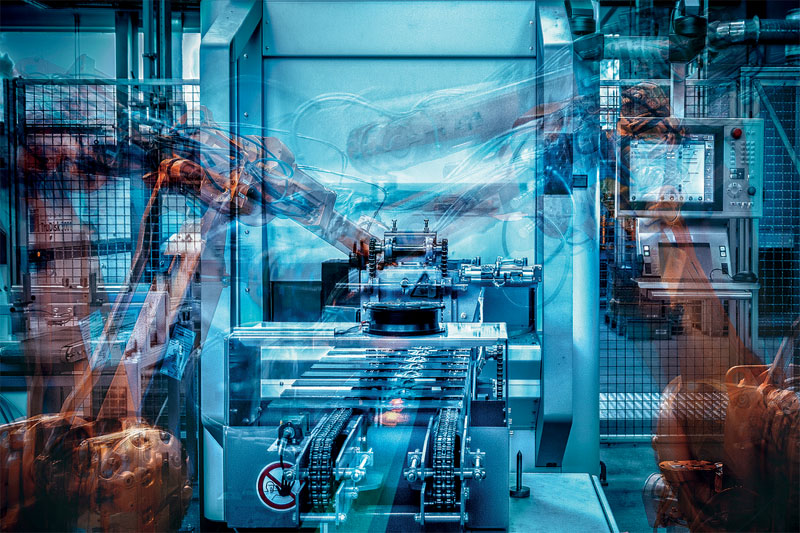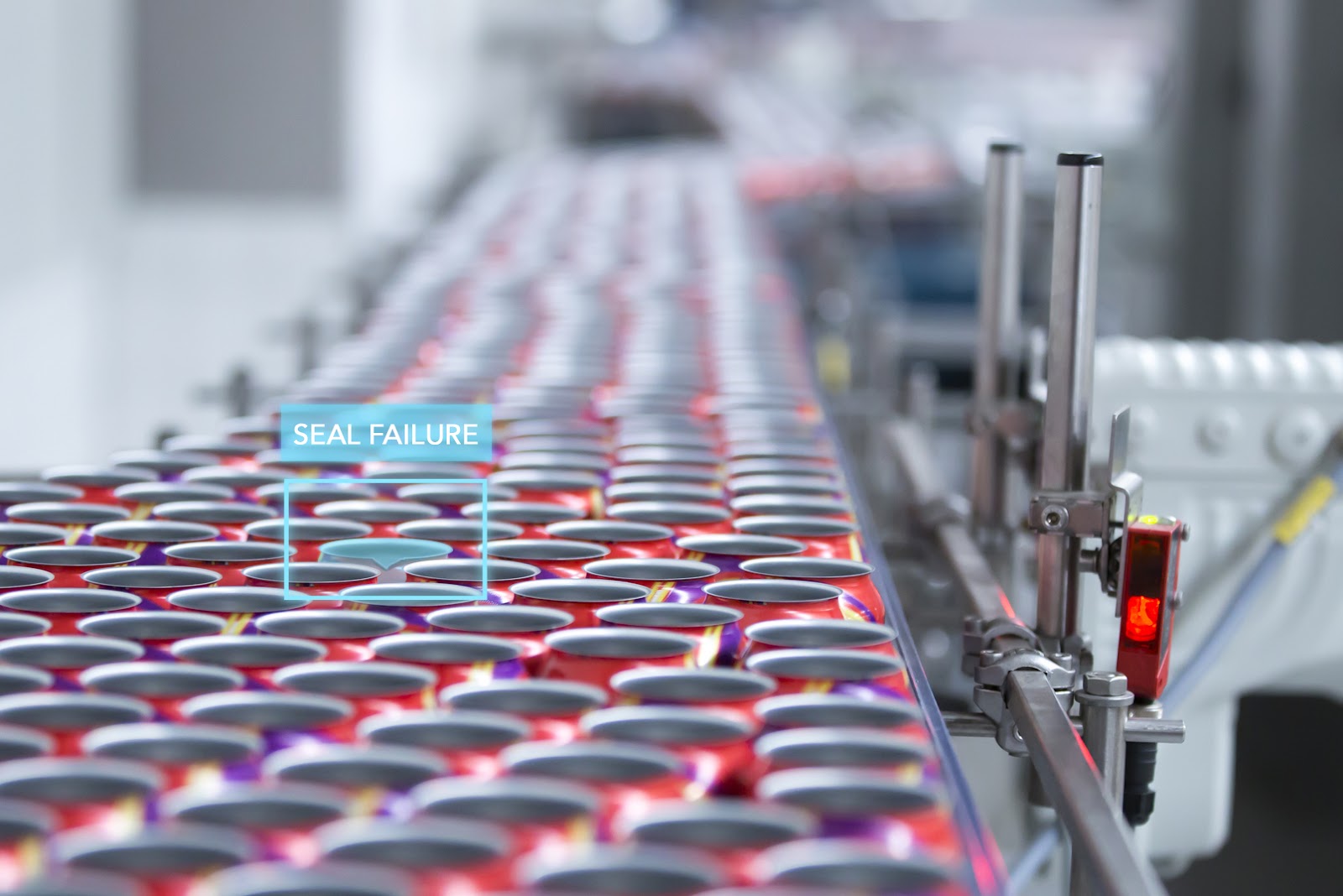Use of AI in Manufacturing and other fields


What AI can do
AI refers to the development of science and technology, manufacturing, agriculture, education, and medicine. It encompasses all areas that require human intelligence.
Automation
Automation systems that use artificial intelligence can effectively handle repetitive and routine tasks by mimicking human thought processes. They provide significant assistance in solving a variety of tasks.
It takes less time
AI systems are designed to process information quickly, track efficiently, and detect errors using big data analytics.
More than 50% productivity
AI can increase productivity and reduce costs and raw material inputs.
Use of AI in Manufacturing and other fields


What AI can do
AI refers to the development of science and technology, manufacturing, agriculture, education, and medicine. It encompasses all areas that require human intelligence.
Automation
Automation systems that use artificial intelligence can effectively handle repetitive and routine tasks by mimicking human thought processes. They provide significant assistance in solving a variety of tasks.
It takes less time
AI systems are designed to process information quickly, track efficiently, and detect errors using big data analytics.
More than 50% productivity
AI can increase productivity and reduce costs and raw material inputs.
Our principles
When working with clients to develop artificial intelligence algorithms, we adhere to a set of principles to ensure clear communication, mutual understanding, and satisfaction with the outcome throughout the process.
Vladimir Karas
Director- Active listening is crucial to understanding the client's needs, concerns, and expectations. This understanding helps shape the AI algorithm accordingly.
- To ensure effective communication, it is important to maintain clear and open channels with the client. Technical concepts should be communicated in a non-technical manner, allowing the client to understand the progress and implications of the AI algorithm.
Explore our best AI and machine vision services
AI involves the development of algorithms, models, and systems that enable machines to imitate human intelligence and behaviour. Our company offers services for implementing artificial intelligence in various fields, including medicine, security, agriculture, manufacturing, education, and public catering.
Security
Machine vision has the ability to analyze vast amounts of data and identify patterns or anomalies that may indicate potential security threats using X-ray images.
Explore MoreManufacturing
AI (Artificial Intelligence) is revolutionizing the field of manufacturing by automating and streamlining processes, leading to increased productivity and efficiency. From product design and development to quality control and predictive maintenance, AI is being utilized at every stage of the production cycle.
Explore MoreMedicine
The introduction of AI systems in medicine is one of the most important modern trends in global healthcare.
Explore More
Security
Machine vision has the ability to analyze vast amounts of data and identify patterns or anomalies that may indicate potential security threats using X-ray images.
Manufacturing
AI (Artificial Intelligence) is revolutionizing the field of manufacturing by automating and streamlining processes, leading to increased productivity and efficiency. From product design and development to quality control and predictive maintenance, AI is being utilized at every stage of the production cycle.
Medicine
The introduction of AI systems in medicine is one of the most important modern trends in global healthcare.
Food & beverage
What are the benefits of using AI in food and beverage (F&B) manufacturing? For brand-driven, regulated, safety-conscious food and beverage producers, AI-powered computer vision from LandingLens offers fast, reliable, accurate product inspection, reject detection, and process monitoring, helping to drive more efficient, higher-quality operations at scale.
Agriculture
AI plays a crucial role in precision agriculture. By combining data from sensors and drones with AI algorithms, farmers can create detailed maps of their fields, showing variations in soil composition, moisture levels, and crop growth. This allows for more precise planting, irrigation, and harvesting, improving productivity and reducing waste.
Electronics
One of the main applications of AI in electronics is in the development of smart devices and smart homes. AI algorithms are integrated into home automation systems, allowing users to control and monitor various electronic devices remotely. These systems can learn and adapt to user preferences, making everyday tasks more convenient and efficient.
About the Voka Technology
Artificial Intelligence (AI) and Machine Learning (ML) have become increasingly popular in recent years, transforming various industries and changing the way we live and work. These technologies offer great promise, providing unprecedented opportunities for advancements in science, business, healthcare, and beyond.
Vladimir Karas
Director
As Artificial Intelligence (AI) and Machine Learning (ML) continue to evolve, there is an increasing demand for skilled professionals in this field. Job opportunities are growing exponentially for developers, data scientists, and engineers proficient in AI and ML. Therefore, individuals interested in pursuing careers in AI and ML should equip themselves with the necessary skills and knowledge to stay ahead in this fast-paced and dynamic field. Artificial intelligence (AI) and machine learning (ML) are transforming the world. These technologies improve efficiency and decision-making in businesses and enhance healthcare outcomes.
It is essential to develop AI responsibly, considering the ethical implications and ensuring that everyone can benefit from its potential.
Explore More
Working with clients in the development of AI algorithms we involves a set of principles that ensure effective communication, understanding, and satisfaction throughout the entire process. These principles can be outlined as follows:
By adhering to these principles, developers can establish a strong and successful working relationship with clients, leading to the effective development and deployment of AI algorithms that address their specific needs and deliver tangible benefits.
Active listening
It is crucial to listen actively and attentively to the client's needs, concerns, and expectations. This allows for a deep understanding of their requirements and helps in shaping the AI algorithm accordingly.
Effective communication
Maintain clear and open communication channels with the client. Make sure to communicate technical concepts in a non-technical manner, allowing the client to grasp the progress and implications of the AI algorithm.
Collaboration and cooperation
Foster a collaborative and cooperative working relationship with the client. Encourage their active involvement in the project by soliciting feedback, input, and ideas. This helps in aligning the AI algorithm with their business goals.
Setting realistic expectations
Be transparent about what can and cannot be achieved with the AI algorithm. Educate the client about the limitations and potential risks involved to ensure realistic expectations throughout the development process.
Flexibility and adaptability
Be flexible and adaptable to changing client requirements and priorities. Technology and business landscapes evolve rapidly, and it is essential to accommodate client needs accordingly
Testing and validation
Conduct rigorous testing and validation of the AI algorithm to ensure its accuracy, reliability, and effectiveness. Regularly involve the client in testing and validation stages to gather their feedback and make necessary adjustments.
Documentation and transparency
Maintain clear documentation of the project's progress, methodologies, and outcomes. This ensures transparency and facilitates future collaboration or modifications to the AI algorithm.
Latest blog & articles
AI & Robotic FAQs
AI and robotics are used in a variety of industries, such as manufacturing, healthcare, agriculture, transportation, customer service, finance, and entertainment. They automate tasks, increase productivity, improve accuracy, and drive innovation.
Artificial Intelligence (AI) refers to the development of intelligent machines capable of performing tasks that typically require human intelligence. It involves simulating human intelligence in machines, enabling them to learn, reason, and make decisions to solve problems or perform specific tasks. AI encompasses various technologies, including machine learning, natural language processing, computer vision, robotics, and expert systems. The aim of artificial intelligence (AI) is to develop machines that can imitate or even exceed human intelligence in terms of their abilities and comprehension.
Robotics is the technology that involves designing, constructing, operating, and using robots. It combines computer science and engineering principles to create machines capable of performing tasks autonomously or with minimal human intervention. Robots are programmable and can be used in various fields, such as manufacturing, healthcare, agriculture, transportation, and entertainment. Robots can be programmed to perform a variety of tasks, including repetitive actions, object manipulation, navigation, human interaction, and decision-making based on sensor inputs.
AI is the creation of intelligent machines capable of performing tasks that typically require human intelligence. It involves developing computer systems or software that can learn, reason, understand, and make decisions similar to humans. AI technologies include computer vision, natural language processing, expert systems, and machine learning. Robotics, on the other hand, deals with the design, creation, and operation of machines that can physically interact with their environment. Robotics is the development of mechanical or electromechanical devices, known as robots, that can perform tasks autonomously or semi-autonomously. It combines mechanical engineering, electrical engineering, and computer science to build physical systems capable of sensing, manipulating, and interacting with objects and their surroundings.
FAQs about Voka Technology
AI and robotics are used in a variety of industries, such as manufacturing, healthcare, agriculture, transportation, customer service, finance, and entertainment. They automate tasks, increase productivity, improve accuracy, and drive innovation.
Artificial Intelligence (AI) refers to the development of intelligent machines capable of performing tasks that typically require human intelligence. It involves simulating human intelligence in machines, enabling them to learn, reason, and make decisions to solve problems or perform specific tasks. AI encompasses various technologies, including machine learning, natural language processing, computer vision, robotics, and expert systems. The aim of artificial intelligence (AI) is to develop machines that can imitate or even exceed human intelligence in terms of their abilities and comprehension.
Robotics is the technology that involves designing, constructing, operating, and using robots. It combines computer science and engineering principles to create machines capable of performing tasks autonomously or with minimal human intervention. Robots are programmable and can be used in various fields, such as manufacturing, healthcare, agriculture, transportation, and entertainment. Robots can be programmed to perform a variety of tasks, including repetitive actions, object manipulation, navigation, human interaction, and decision-making based on sensor inputs.
AI is the creation of intelligent machines capable of performing tasks that typically require human intelligence. It involves developing computer systems or software that can learn, reason, understand, and make decisions similar to humans. AI technologies include computer vision, natural language processing, expert systems, and machine learning. Robotics, on the other hand, deals with the design, creation, and operation of machines that can physically interact with their environment. Robotics is the development of mechanical or electromechanical devices, known as robots, that can perform tasks autonomously or semi-autonomously. It combines mechanical engineering, electrical engineering, and computer science to build physical systems capable of sensing, manipulating, and interacting with objects and their surroundings.











